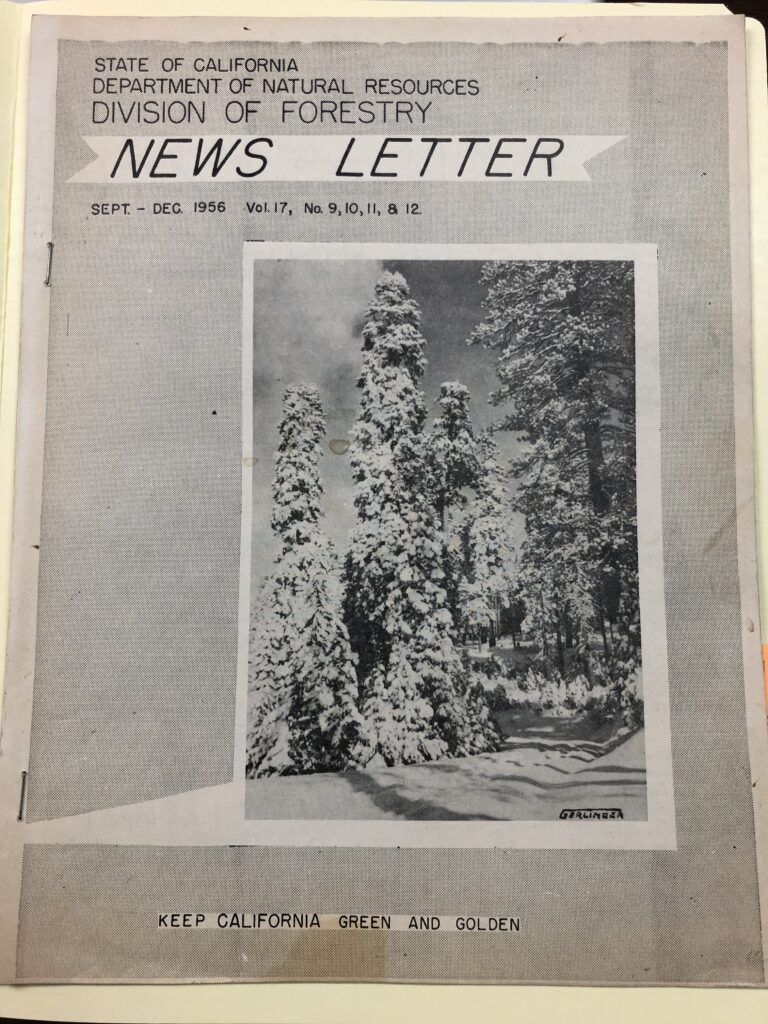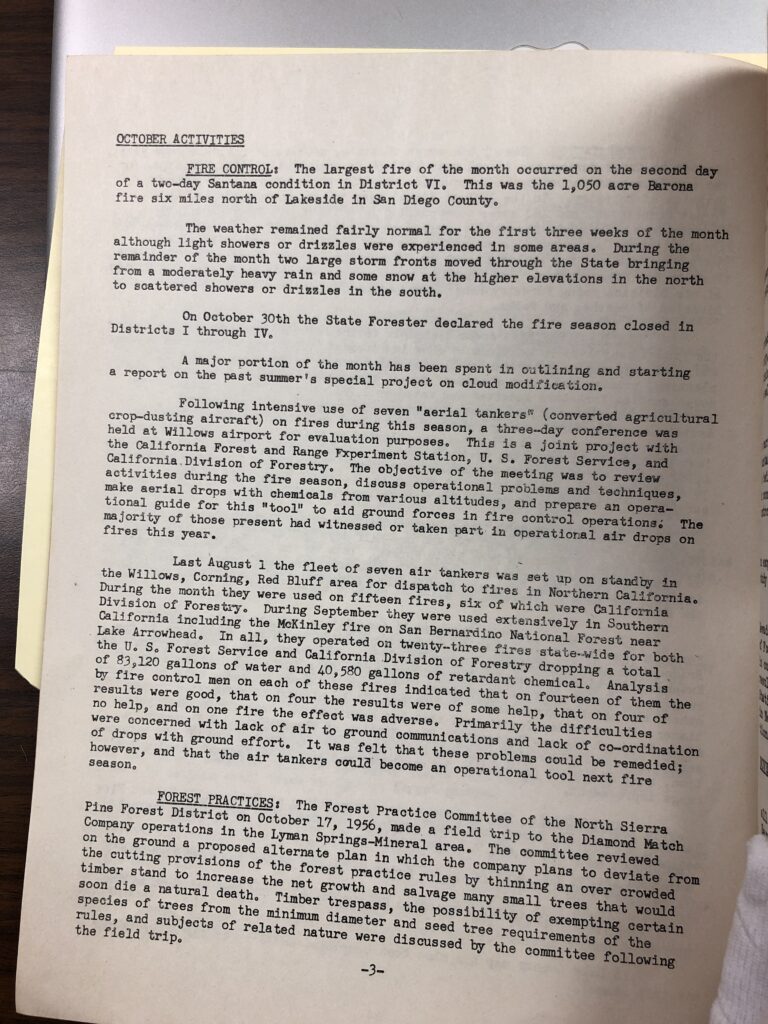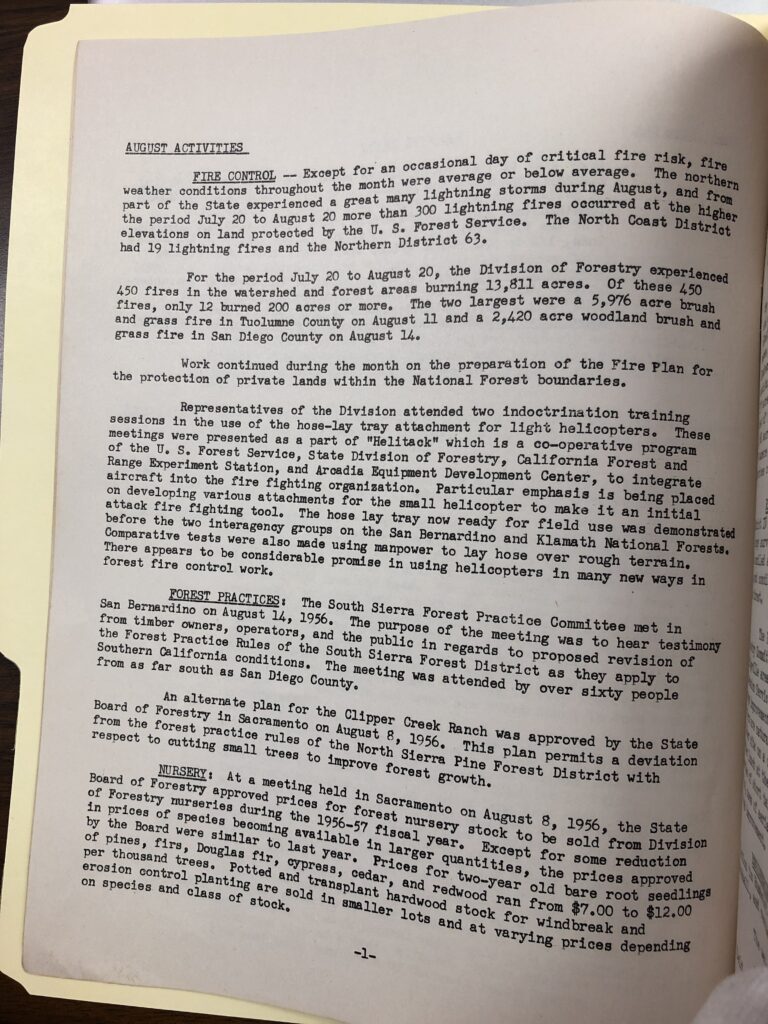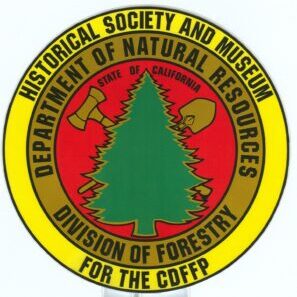Snippets of History – Air Program beginnings

Cover – Division of Forestry Newsletter, Sep – Dec 1956 Vol 17, #9 – 12
Unearthed at the museum today: from the October Activities section, 1956 State newsletter mentioning “recent” developments in the State’s air program:
“Following intensive use of seven “aerial tankers” (converted agricultural crop-dusting aircraft) on fires during this season, a three-day conference was held at Willows airport for evaluation purposes. This is a joint project with the California Forest and Range Experiment Station, US Forest Service, and California Division of Forestry. The objective of the meeting was to review activities during the fire season, discuss operational problems and techniques, make aerial drops with chemicals from various altitudes, and prepare an operational guide for this “tool” to aid ground forces in fire control operations. The majority of those present had witnessed or taken part in operational air drops on fires this year. Last August 1 the fleet of seven air tankers was set up on standby in the Willows, Corning, Red Bluff area for dispatch to fires in Northern California. During the month they were used on fifteen fires, six of which were CDF. During September, they were used extensively in Southern California, including the McKinley fire on San Bernardino NF near Lake Arrowhead. In all, they operated on twenty-three fires statewide for both the USFS and CDF dropping a total of 83,120 gallons of water and 40,580 gallons of retardant chemical. Analysis by fire control men on each of these fires indicated that on fourteen of them, the results were good, that on four the results were of some help, on four of no help and on one fire the effect was adverse. Primarily the difficulties were concerned with lack of air to ground communications and lack of coordination of drops with ground efforts. It was felt that these problems could be remedied, however, and that the air tankers could become an operational tool next fire season.”

From the August activities section:
“Representatives of the Division attended two indoctrination training sessions in the use of the hose-lay tray attachment for light helicopters. These meetings were presented as a part of “Helitack” which is a co-operative program of the USFS, State Division of Forestry, California Forest and Range Experiment Station, and Arcadia Equipment Development Center, to integrate aircraft into the fire fighting organization. Particular emphasis is being placed on developing various attachments for the small helicopter to make it an initial attack fire fighting tool. The hose lay tray now ready for field use was demonstrated before the two interagency groups on the San Bernardino andKlamath National Forests.Comparitive tests were also made using manpower to lay hose over rought terrain. There appears to be considerable promise in using helicopters in many new ways in forest fire control work, .

